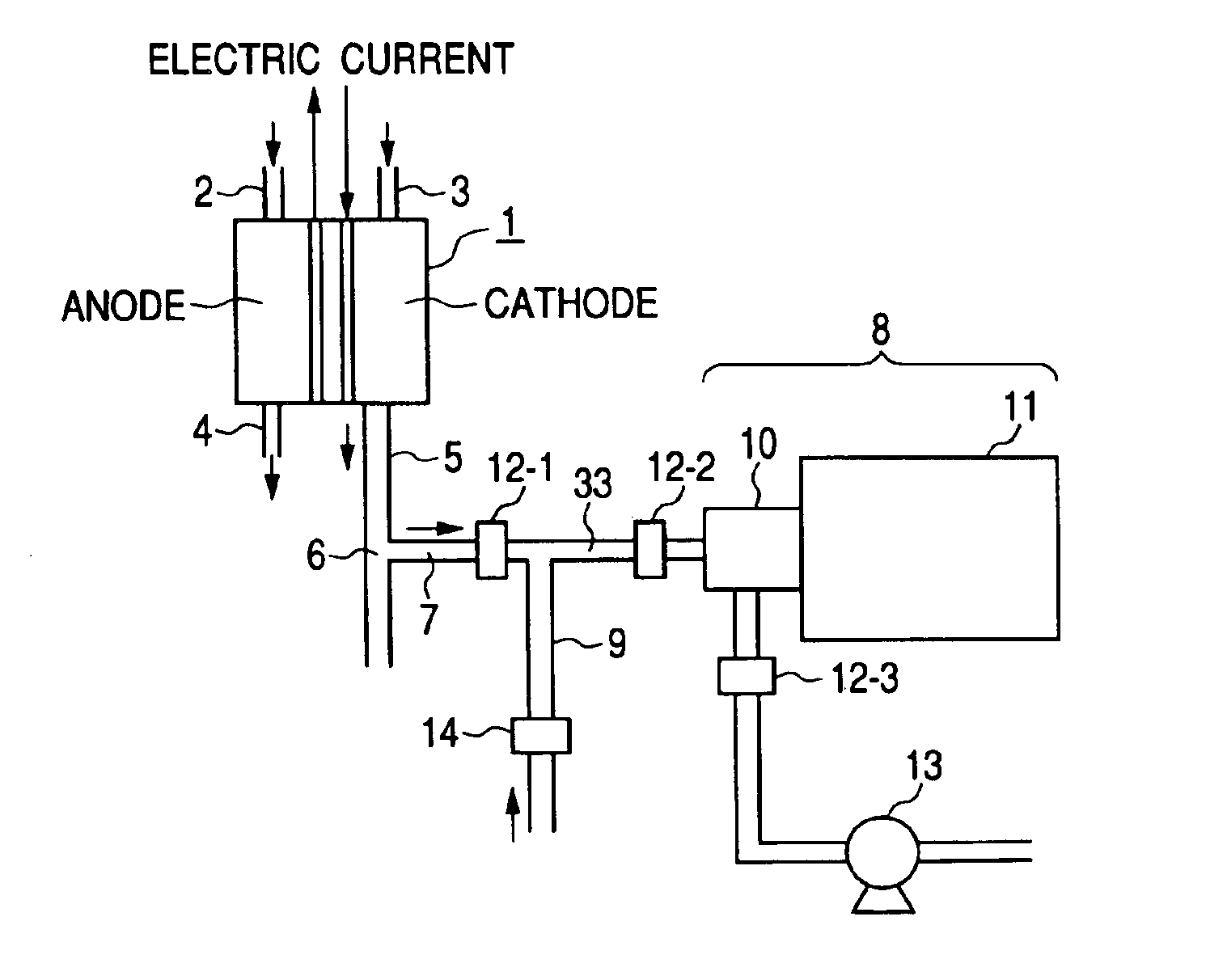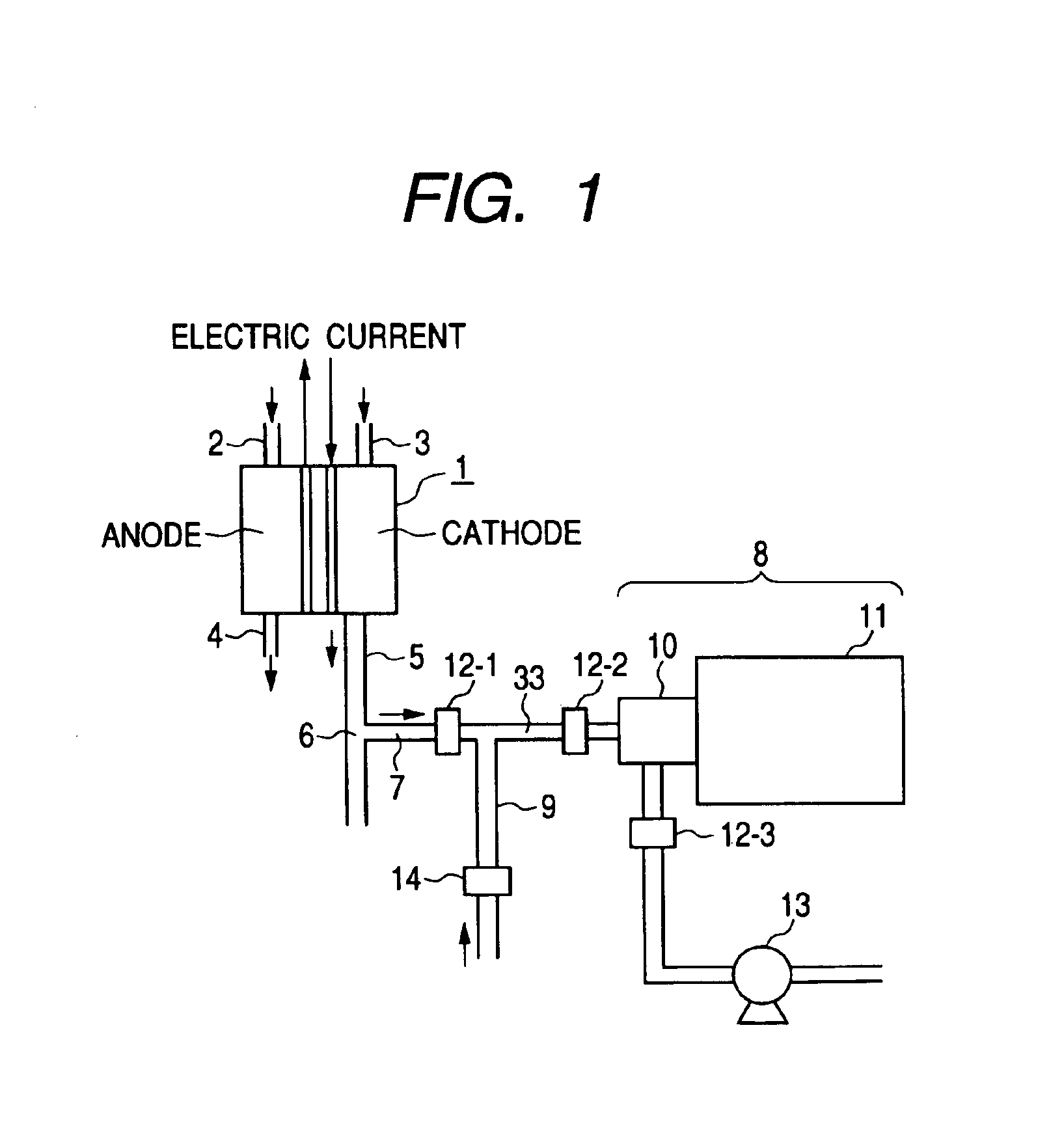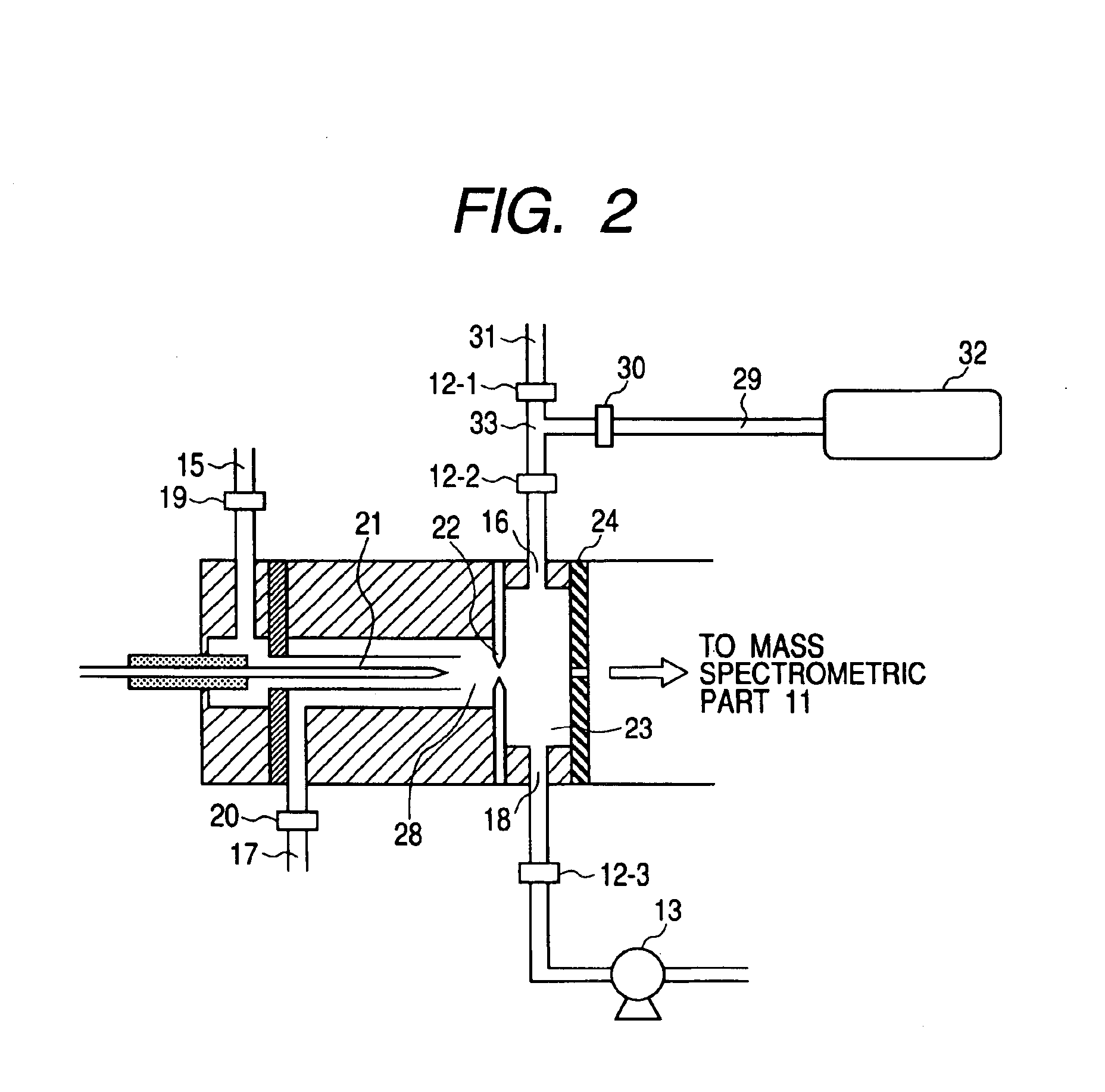Mass spectrometer
a mass spectrometer and mass spectrometer technology, applied in the field of mass spectrometers, can solve the problems of insufficient sensitivity, difficult to accurately evaluate the performance of the operation system of the fuel cell and the fuel cell, and difficult to specify the ion derived from hydrogen in the gas sampled, and to determine the precise concentration
- Summary
- Abstract
- Description
- Claims
- Application Information
AI Technical Summary
Benefits of technology
Problems solved by technology
Method used
Image
Examples
Embodiment Construction
In the following description, as a system targeted for inspection, the polymer elecrolyte fuel cell will be exemplified for description.
FIG. 3 is a view for explaining structure of a polymer electrolyte fuel cell to which the present invention is applied. As regards the polymer electrolyte fuel cell 1 (PEFC), the development has been pursued as an automotive and dispersal power source or as a fuel cell for a household. As shown in FIG. 3, hydrogen gas is introduced as fuel from a gas inlet piping 2 on anode of the fuel cell, is discharged from a gas outlet piping 4 on anode, air is introduced from a gas inlet piping 3 on cathode, and is discharged from a gas outlet piping 5 on cathode.
By a catalytic action of a polymer electrolyte membrane 25, a hydrogen molecule is dissociated by a hydrogen atom on anode, further emits electrons, proton (H+) generated moves from an electrode 26 on anode to an electrode 26 on cathode, and reacts with an oxygen molecule in air to form water. At this ...
PUM
| Property | Measurement | Unit |
|---|---|---|
| outlet flow rate | aaaaa | aaaaa |
| flow rate | aaaaa | aaaaa |
| flow rate | aaaaa | aaaaa |
Abstract
Description
Claims
Application Information
 Login to View More
Login to View More - R&D
- Intellectual Property
- Life Sciences
- Materials
- Tech Scout
- Unparalleled Data Quality
- Higher Quality Content
- 60% Fewer Hallucinations
Browse by: Latest US Patents, China's latest patents, Technical Efficacy Thesaurus, Application Domain, Technology Topic, Popular Technical Reports.
© 2025 PatSnap. All rights reserved.Legal|Privacy policy|Modern Slavery Act Transparency Statement|Sitemap|About US| Contact US: help@patsnap.com



